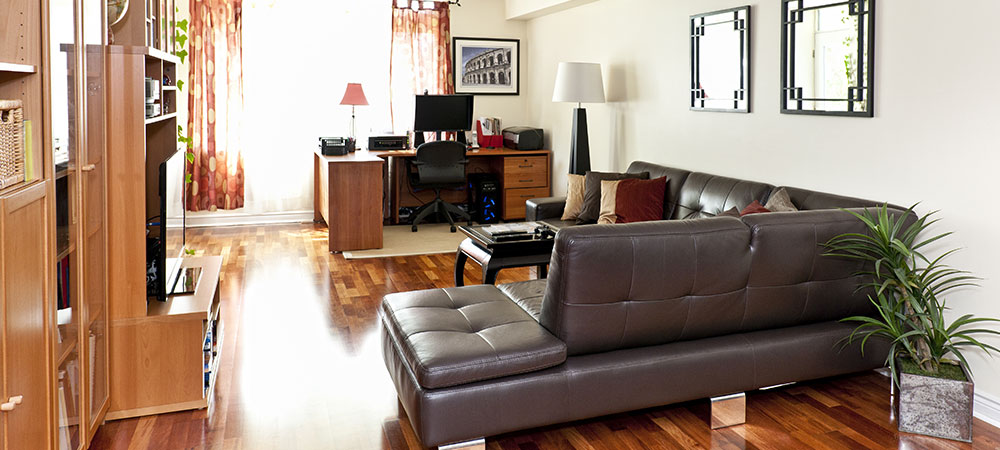‘Tis the Season…for Allergies?

When you hear “environmental allergies,” trees, grasses, and weeds might be the first allergens that come to mind. Just when you breathe a sigh of relief from waning outdoor allergens, prepare for sneaky indoor environmental allergens.
Mold and dust mites trigger allergies throughout the year. But, as winter rolls around and you begin spending more time indoors, you might notice an increase in allergy symptoms.
Find out where mold and dust mites thrive, what symptoms they may cause, and how you can outsmart these pesky allergens to get on the path toward feeling better.

Indoor Mold
The typical season for outdoor mold is between the spring thaw and after the first few frosts in late fall. Indoor mold, or composting mold, is another story — it thrives year round in damp, dark, warm spaces, especially in these areas of your home:
- Kitchens
- Crawl spaces
- Bathrooms
- Dark basements
Common indoor mold allergy symptoms include sinus pressure, aching, exhaustion, drainage in the throat, and chronic sinusitis. Determining if you have a mold allergy can be tricky. Symptoms for different types of mold can vary, even from one patient to the next.
Combating your mold allergy starts at home
Although completely eliminating mold is impossible, here are a few ways you can start combating mold found in your home:
- Replace old storage boxes with plastic totes
- Dust your books and throw out books or magazines that smell moldy
- Scrub away mold on bathroom surfaces (toilet, shower, sink)
- Use a dehumidifier and keep humidity levels below 50%
- Remember to clean your dehumidifier to keep it mold free!
Reducing indoor mold can be a temporary solution. There may be more mold hiding around you, so it’s important to eliminate the source — for example leaky pipes, roofs, etc. — to prevent it from coming back.
Does your mold allergy continue to slow you down?
Personalized allergy drop immunotherapy following the La Crosse Method™ Protocol can help you learn to safely tolerate some mold allergens in your environment, so you may reduce future reactions. Just as ways to combat mold begin at home, allergy drops can be taken right at home too, with no need for frequent trips to your doctor’s office.
Dust mites
Like mold, dust mites like humid conditions. One difference — dust mites are microscopic in size and need to absorb moisture and feed on human skins cells to survive.
According to the Asthma and Allergy Foundation of America, dust mites like to hide in areas of your home you don’t frequently dust:
- Beds
- Fabric couches and chairs
- Carpeting
- Curtains
- Stuffed animals
Dust mite allergy symptoms are typically consistent with allergic rhinitis symptoms — think sneezing, runny nose, itchy/watery eyes, and post nasal drip. If you suffer from these symptoms every year when you close up for the cooler months, talk with a provider to see if testing makes sense for you.
It’s impossible to eliminate all dust mites, but there are plenty of tips for cleaning your space to reduce these creatures in your home:
- Encase pillows and mattresses in allergen proof covers
- Wash all bedding weekly in hot water (130 degrees F or warmer)
- Vacuum carpet, furniture, and upholstery on a regular basis using a HEPA filter
- Replace carpeting with hardwood or tile flooring
- Remove clutter, especially from your bedroom
Diagnosed with dust mite allergy? Now what?
It can be exhausting to continue battling dust mite allergy after constantly cleaning, only to experience short term symptom relief. A provider near you who reports following the La Crosse Method™ Protocol can help you get started with personalized allergy drop immunotherapy.
A benefit of this treatment is that it can help your body build tolerance to your allergens with the goal of long-lasting relief.
We hope this information helps you get started combating your mold and/or dust mite allergy to begin a path toward feeling better.
Treat the cause
Interested in learning how personalized allergy drop immunotherapy can be used to treat the cause of your allergies? Find a provider near you who has received training and currently reports following the La Crosse Method Protocol for allergy drop immunotherapy.





